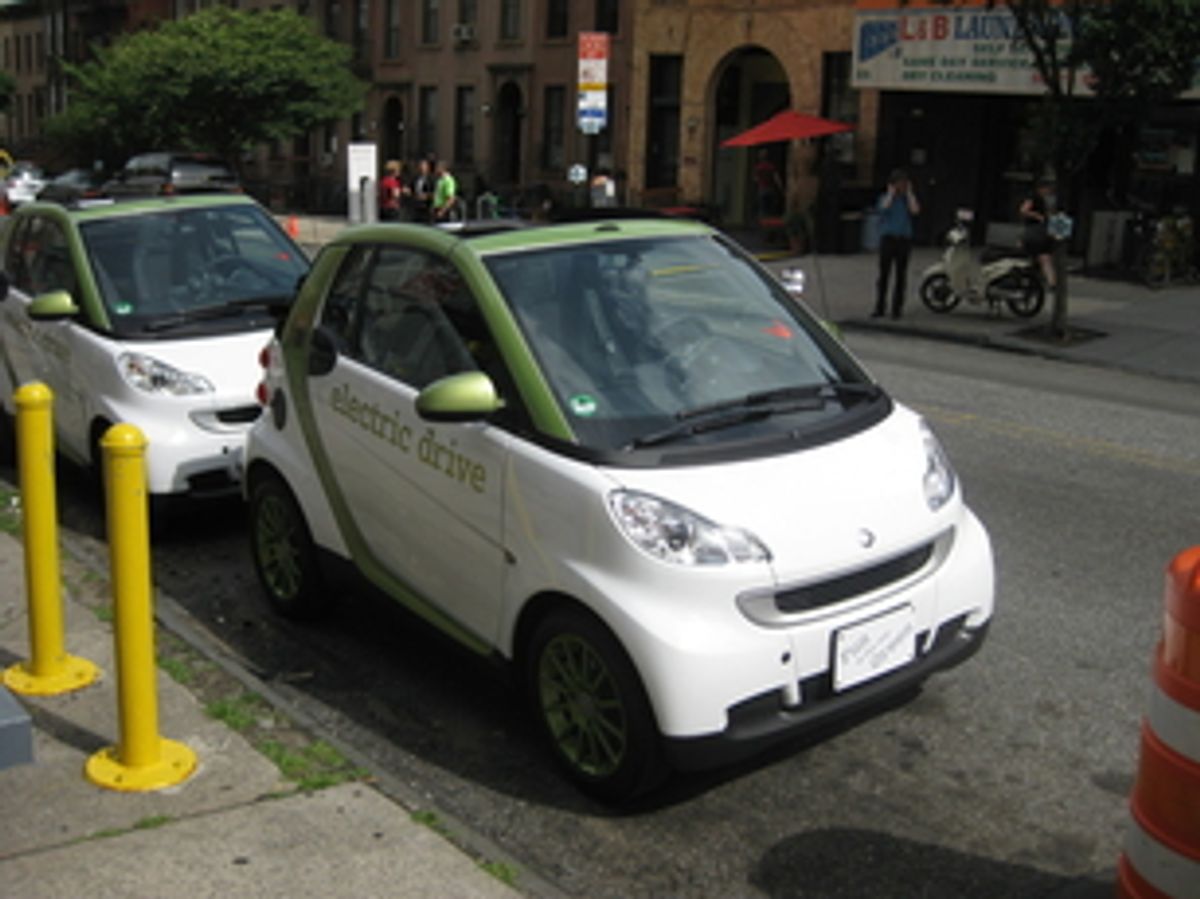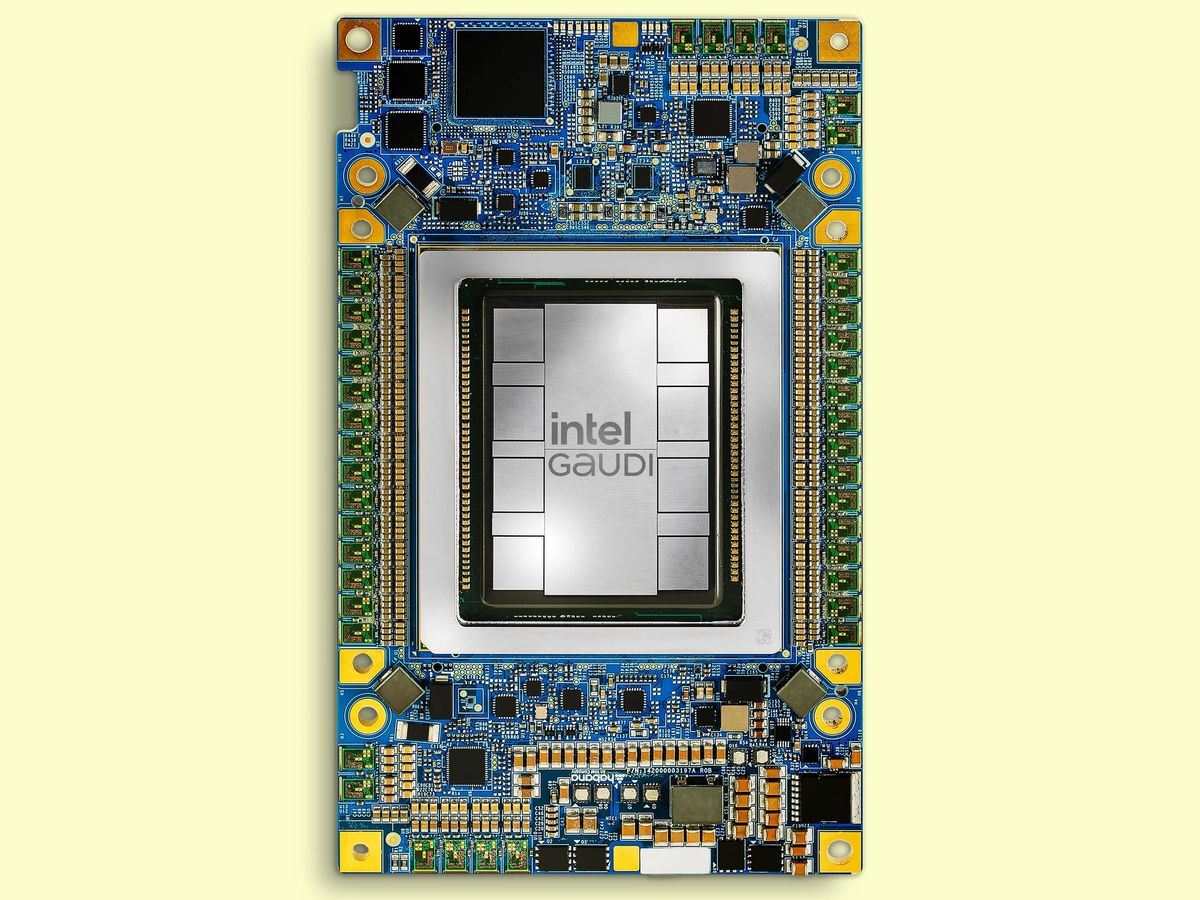Daimler Benz is getting set to roll out an electric version of its tiny Smart Car, though U.S. sales will begin only two years from now. The German company has been showcasing its plans this week and last with a string of Smart Cars parked on a residential street in Brooklyn (above), where members of the automotive press are given briefings. The cars, rather fetchingly painted to highlight certain design and safety features, make an engaging sight.
The plan is to lease 250 electric Smarts in the coming year, on a trial basis, to select customers in five urban areas: Portland, Ore., San Jose, Orlando, Indianapolis, and in the Interstate 95 corridor from DC to Boston. A few vehicles may also be placed in Austin, Detroil, and Los Angeles. Customers will make a down-payment of $2,500 and pay $599/month, and they'll get a four-year guarantee. Daimler introduced 100 electric Smarts in London in 2007, and currently is placing about 1500 more worldwide.
The electric Smart Car employs the so-called Smart fortwo drive system--fortwo to be read as for-two (not Smart fort-wo, as I perversely read it at first glance), to distinguish it from the discontinued Smart for-four . With an extension cord provided either with the car or at the "pump," the car can be charged either at 110 or 220 Volts, but not at a higher voltage. At 220 volts the car can be charged to roughly 80 percent capacity in three and a half hours, at 110 in about seven. So, Daimler's business model generally anticipates overnight charging at home, though it also will be possible to charge roadside at stations like the ones Coulomb will install in nine U.S. metropolitan areas.
As an enthusiastic and loyal driver of BMW's Mini Cooper, I have to confess that the Daimler Smart Car has always looked pretty dumb to me. The car's absence of any front end has always reminded me of the original VW, in which drivers routinely were impaled by the steering column in head-on collisions. Daimler makes a strong case that it has designed around such problems: Its handlers point out that the car is made of exceptionally strong steel and is shaped like a "nut"--not a walnut (as I initially understood), but the kind of nut you put on a bolt. Looked at from the side (above), the hexagonal support structure is in fact plainly visible, highlighted by the paint job.
The Smart Car, like the Mini, performs well in the most demanding crash tests. But those tests have limits, not taking into account for example scenarios in which the car is pushed, dragged, or thrown off the road by a much larger vehicle. Analysts including those at Consumer Reports have pointed out that drivers of any micro-cars are about 50 percent more likely than drivers of large cars to die in accidents..
In terms of performance, the electric Smart fortwo handles nicely in city traffic, darting and slithering through openings no other car can navigate. A single-geared vehicle, it is equipped with a 16.5 kWh lithium ion battery and accelerates from zero to 60 km/h in 6,5 seconds. It has a range of 135 kilometers. Daimler estimates that a typical commuter would need to charge the car only once a week.



